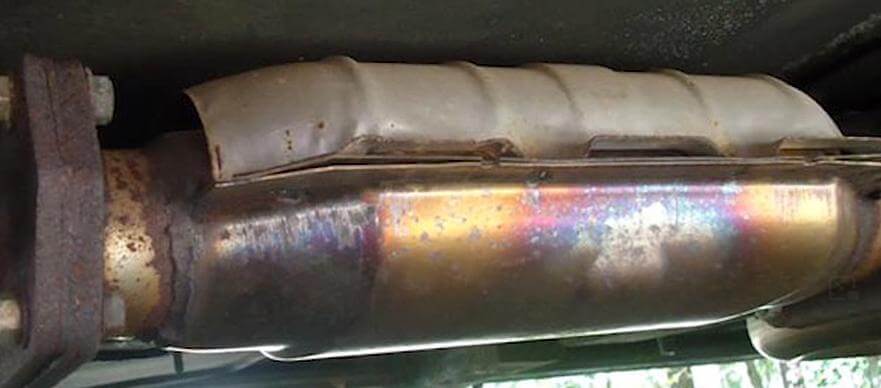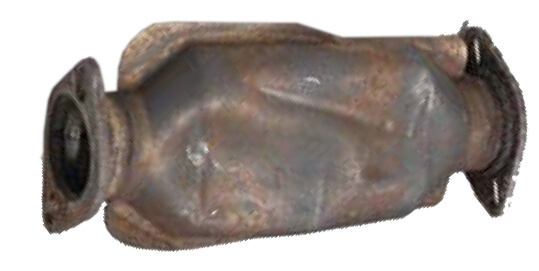Diagnosing Catalytic Converter Codes: A Complete Guide
Step-by-step guide to diagnosing catalytic converter codes
A catalytic converter is designed to last the life of the vehicle. However, they can fail early if they overheat due to faulty air/fuel mixtures, if they ingest too much oil or coolant, if they impact a parking curb or other obstacle, or if they’re subject to cold water splash due to a missing heat shield.
If your vehicle has any of these common catalytic converter trouble codes, follow the checklist below before automatically replacing the catalytic converter. If you don’t fix the underlying problem, you’ll just damage the replacement catalytic converter
P0420 Catalyst system efficiency below threshold (Bank 1)
P0421 Warm-up catalyst efficiency below threshold (Bank 1)
P0422 Main catalyst efficiency below threshold (Bank 1)
P0423 Heated catalyst efficiency below threshold (Bank 1)
P0424 Heated catalyst temperature below threshold (Bank 1)
P0430 Catalyst system efficiency below threshold (Bank 2)
P0431 Warm-up catalyst efficiency below threshold (Bank 2)
P0432 Main catalyst efficiency below threshold (Bank 2)
P0433 Heated catalyst efficiency below threshold (Bank 2)
P0434 Heated catalyst temperature below threshold (Bank 2)
The questions to ask yourself before you diagnose a catalytic converter
• Have you had to add coolant regularly over the last year? An internal coolant leak can damage a catalytic converter. If you’ve had to add coolant, find the source of the leak before replacing the converter
• Is the engine hard to start? Does it lack power? Has your MPH gone down lately? That may be a sign of a clogged converter. Test for high exhaust backpressure.
• Have you installed a performance tune? If so, revert to the factory tune and see of the catalytic converter trouble code disappears.
Perform a visual check of the catalytic converter
Look for dents or discoloration (blue or purple areas
indicate overheating caused by improper air/fuel mixtures). If you find dents, tap the converter with a rubber mallet and listen for rattling. If you hear a rattle, the impact has damaged the ceramic brick and the converter must be replaced.
If you see discoloration, fix the underlying air/fuel problem before replacing the converter. Otherwise, you’ll just damage the replacement. A bronze/blue rainbow discoloration of the shell typically indicates elevated temperatures
Then check for an exhaust leak check
Using a shop vac and a spray bottle, check for cracks or leaks, especially at the O2 sensor ports. Connect the shop van hose so it’s in blow mode. Connect to the tailpipe using duct tape. Turn on the shop vac to pressurize the exhaust system.
Use a spray bottle filled with soapy water to spray all gaskets at all exhaust flanges. Check for leaks at all joints and the flex pipe.
Check the operation of the oxygen sensors to diagnose a catalytic converter
The upstream oxygen sensor should be very active and typically oscillate rapidly from approximately 0 to less than 1 volt. If the upstream sensor shows low or no voltage, the sensor could be defective; or, there might be an exhaust leak before or immediately behind the sensor.
Typically, the rear sensor should emit a fairly steady signal. If the signal is below 250 mv, check for activity by rapid accelerator kickdown, or by raising the engine speed to approximately 2,000 RPM. Some movement should be noted.
Check long-term fuel trims
Using a scan tool, check the long-term fuel trim percentages. If the ECM is adding more than 10% fuel, locate the cause and fix it before you proceed to replace the catalytic converter.
If the engine is hard to start, lacks power, or has dramatically lower MPG, check for a clogged catalytic converter
Excessive system backpressure can generate a converter efficiency code. Normal exhaust backpressure is around 1 to 1.5 psi at idle, rising to slightly less than 3 psi at 2, 000 RPM.
Test for back pressure by removing the oxygen sensors and installing a pressure gauge. Test for pressure ahead of the cat and then behind the cat.
If you find high backpressure behind the converter, that’s a sign of a restricted muffler or resonator
High backpressure ahead of the converter indicates a restricted converter
Excessive backpressure will adversely affect the air/fuel ratio leading to excessive emissions
Test cat converter temperature while running
An infrared thermometer is used to measure the temperature of the converter’s front and rear weld rings. A typical converter begins to “light off” at 350°F and is fully operational at around 500°F.
The rear weld ring may commonly be 150°F higher than the front weld ring. However, if the rear weld ring reaches temperatures over 150°F higher than the front weld ring, the engine may have an emissions problem.
If the rear weld ring is significantly cooler than the front, the converter may not be lighting off. This may indicate the converter has failed or that the exhaust mixture is not correct, which is a symptom of an underlying emissions issue.
Converter temperatures should never be above 1200°F. Operation above 1600°F can damage the ceramic structure and the coating of precious metals on the substrate, reducing its efficiency. Excessive temperatures can reduce the converter’s durability or, if high enough, destroy the converter’s matting or substrate.
©, 2024 Rick Muscoplat
Posted on by Rick Muscoplat


